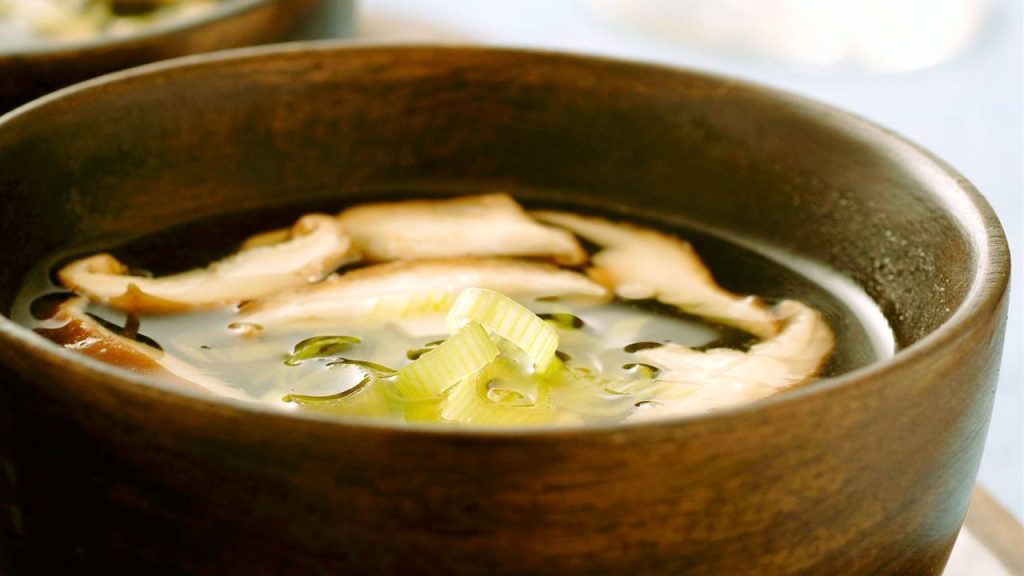There is a lot of talk about the benefits of bone broth, but we can also enrich a vegetable broth, without bones, so that it gives us similar properties.

- Bone broth: benefits and properties
- Bone broth: vegetarian alternative
- “Bone broth”: the boneless recipe
Bone broth is a “drink” very rich in nutrients, especially minerals and proteins, and also collagen. It is, in fact, an infusion and a great way to hydrate and at the same time nourish thanks to its properties. For many people it is also a very comforting option… but not for those who follow a vegetarian diet.
Is there anything equivalent to bone broth in the vegetarian diet or if we simply want to avoid bones? Do we have any way to benefit from the properties of a bone broth without using ingredients of animal origin?
In this article we will try to answer these questions and offer a vegetable alternative to bone broth. It is true that a basic vegetable broth can never replace a bone broth in certain nutritional contributions, but there are things we can do to obtain most of its benefits.
BONE BROTH: BENEFITS AND PROPERTIES
The benefits of a good bone broth are many and varied.
- It helps hydrate the body thanks to the contribution of minerals. Drinking water is not the same as drinking broth; It is much more interesting to drink broth for its richness in minerals.
- Bone broth is rich in proteins that are easily absorbed and assimilated.
- It helps repair the intestinal wall thanks to its collagen content.
- Improves digestive health and digestion ability.
- It is easy to prepare and can be used in countless recipes on a daily basis (soups, creams, stews, etc.).
To take advantage of these properties of bone broth, it is important to do it with bones and parts of grass animals, mineral water and vinegar.
Vinegar is used to extract minerals from the bones and for them to pass into the water. In addition, you can add bay leaf, ginger, pepper balls, chafado garlic, celery and dehydrated mushrooms, among other ingredients.
In an omnivorous diet you can make bone broth once a week to benefit from this superfood in the kitchen on a daily basis. But how can we get most of the benefits of bone broth without adding bones to our broth?
BONE BROTH: VEGETARIAN ALTERNATIVE
When making a vegetable broth that provides the greatest number of nutrients similar to those of a bone broth, we can include certain ingredients:
- One of the main ingredients of our boneless bone broth is going to be cochayuyo seaweed. This alga contains N-acetyl cysteine, a substance that is also found in the carcass of the chicken and that favors the elimination of mucus.
- Minerals such as calcium will be achieved by adding other algae such as kombu seaweed or wakame, the latter very rich in calcium. These algae also stand out for their content in potassium, iron, iodine and magnesium.
- To get even more minerals and the purifying properties of the broth, we must add dried mushrooms such as shiitake mushrooms, which, in addition, provide umami flavor and some amino acids.
- If in the broth we also put vegetables such as celery, turnip, leek or parsnip, we will achieve a good broth rich in flavor and more minerals.
This broth, unlike bone broth, does not contain collagen, as collagen is found only in foods of animal origin. For this reason, we must complete the broth with foods rich in protein and vitamin C.
- Legumes are a great option as a source of protein and we can take them in another dish or, of course, add them to our broth. Of course, they must be soaked previously to eliminate antinutrients. Another option is to add a few pieces of tofu, although it would be convenient for them to be cooked minimally.
- Vitamin C is interested in incorporating it to promote the natural production of collagen in the body. We can, for example, add lemon juice when we drink the glass of broth to enrich it in this vitamin.
“BONE BROTH”: THE BONELESS RECIPE
INGREDIENTS FOR 4 PEOPLE
- 3-4 liters of mineral water
- 8 celery sticks, chopped
- 2 handfuls dried shiitakes
- 1 cubed parsnip
- 2 cubed turnips
- 1 sliced leek
- 1 bunch of fresh parsley
- 2 handfuls of cochayuyo seaweed
- 1 piece of kombu seaweed, sliced
- 1 tablespoon flakes wakame seaweed
- 4 handfuls of beans (previously soaked and drained)
- laurel
- cumin
- ginger
- black pepper
- garlic
- miso
- lemon
PREPARATION:
- In a large pot, add the water and all the ingredients except the lemon juice and miso (we will use them to serve the dish).
- Bring to a boil and let it boil for 2 hours (to allow time for the legumes to cook well).
- Strain and serve or store in glass jars.
TIPS AND TRICKS:
- If foam forms in the broth during cooking, especially at first, remove it with a foam.
- I personally like to serve this broth as a miso soup, with the very soft vegetables, beans, diluted miso and a little lemon juice. I also add a poached egg for extra nutrients and protein.
- It can be cooked in a pressure cooker for two hours, plus one hour of rest.
- I use little sweet vegetables so that the broth is preserved longer, but you can use cabbage, onion, carrot, pumpkin …
- If instead of soaked beans you add pieces of tofu, the cooking time can be reduced.








